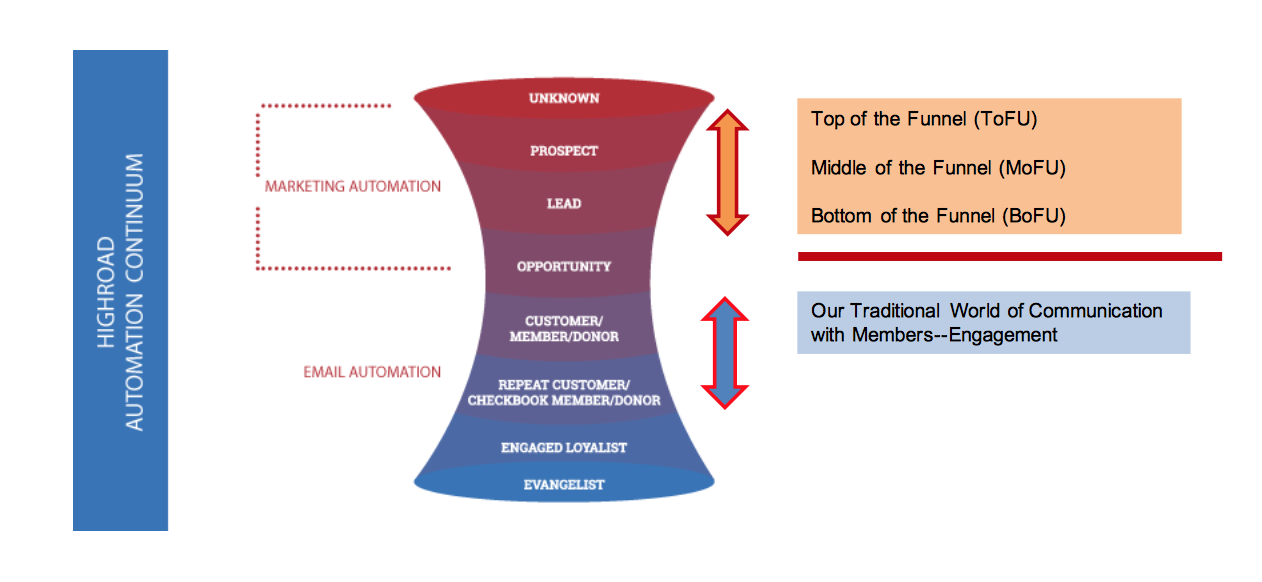The "Funnel-mentals" of Inbound Marketing
In the digital landscape today, the shift from outbound to inbound marketing has proved incredibly successful for associations nationwide that have adopted this engaging and thoughtful methodology of marketing automation. Inbound marketing is a strategy focused on attracting consumers through online content, SEO, thoughtful interactions, landing pages, social media, and more. It uses forms of pull marketing and functions as entirely permission based, allowing users to come to a specific product or service – whereas outbound is focused on pushing and fighting for users' attention. By generating relevant content to specific personas at a specific time, inbound marketing has revenue generating capabilities, builds greater trust among consumers, all while providing content catered to their specific needs and wants.
The “Funnel-mentals”: A Breakdown of The Funnel ApproachThe funnel approach, also known as the buyers journey, is a key practice of inbound marketing that takes an open approach to attract strangers to a product or service. The process of the funnel is constantly trying to move from top to bottom until something is bought and revenue is generated, moving the user from an opportunity, to a customer, to an evangelist. The overarching goal of the funnel approach is to quickly move the user while keeping them engaged and coming back for more content. It is a key feature of inbound marketing because it allows the user to come to the product or service naturally. A breakdown of the funnel is as follows:
ToFu: Top of the Funnel: The top of the funnel is the first step in attracting anonymous users and engaging them. Content is used as “bait” to bring a user in to the services and products you provide.
MoFu: Middle of the Funnel: The middle of the funnel is the place where the opportunity arises and where the anonymous user becomes a customer.
BoFu: Bottom of the Funnel: The bottom of the funnel is the place where the customer becomes a member. The goal in the bottom of the funnel is to engage the member and provide lifetime value for years to come. The bottom of the funnel is where marketing automation is applied in order to gain greater insight into the member or customer base.

Why It Matters
Understanding the important shift from outbound marketing to inbound marketing is beneficial for associations for a number of reasons. Inbound gives full insight from start to finish, providing analysis of data in one place, the process is more efficient, and more forward-facing. Most importantly inbound marketing gives associations revenue generating capabilities and top line growth, collecting information and personas from comprehensive profiles across different channels so that data driven decisions can be made on how to CONNECT with, PROVIDE for, and INTERACT with consumers.
*Information courtesy of HighRoad Solution's ASAE Lunch Learning Webinar: Industry Trends: Why Associations are Adopting Marketing Automation and What Association Marketers Love About Inbound Marketing






